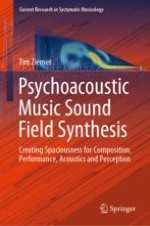This book provides a broad overview of spaciousness in music theory, from mixing and performance practice, to room acoustics, psychoacoustics and audio engineering, and presents the derivation, implementation and experimental validation of a novel type of spatial audio system. Discussing the physics of musical instruments and the nature of auditory perception, the book enables readers to precisely localize synthesized musical instruments while experiencing their timbral variance and spatial breadth.
Offering interdisciplinary insights for novice music enthusiasts and experts in the field of spatial audio, this book is suitable for anyone interested in the study of music and musicology and the application of spatial audio mixing, or those seeking an overview of the state of the art in applied psychoacoustics for spatial audio.
